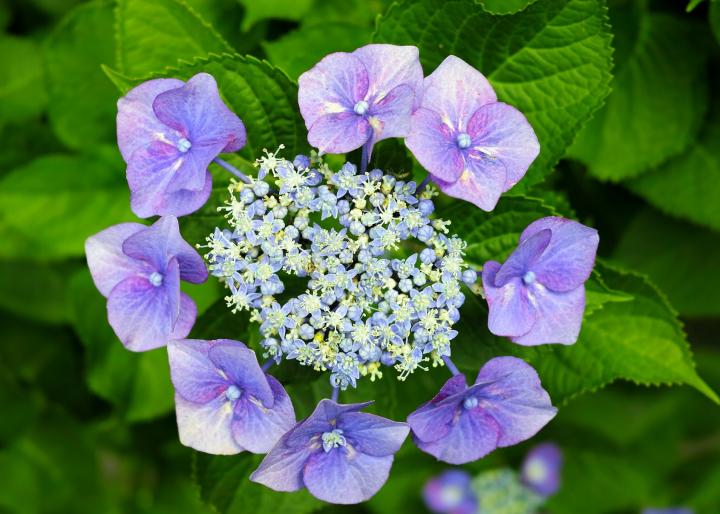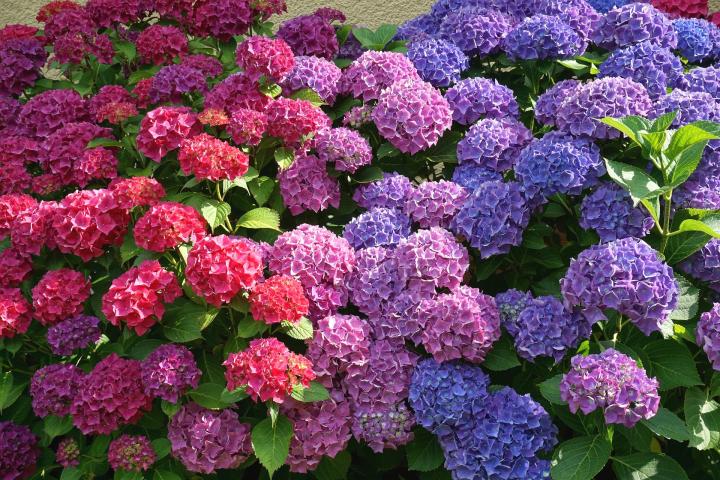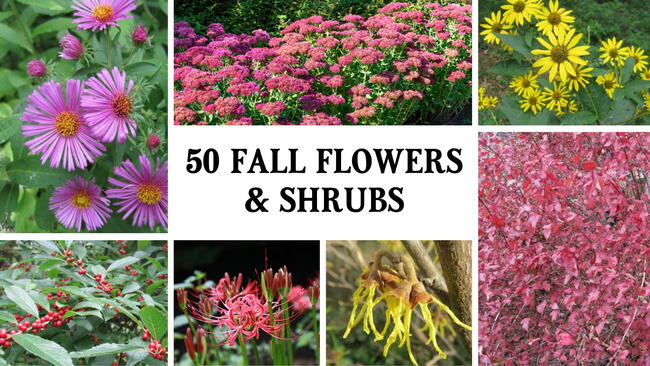
Photo Credit
Pixabay
Botanical Name
Hydrangea spp.
Plant Type
Special Features
Subhead
Planting, Growing, and Pruning Hydrangea
Read Next
Types
For a more detailed overview of the many types of hydrangeas, check out Hydrangea Varieties for Every Garden.
There are two main groups of hydrangeas:
Group 1: Plants that Bloom on New Growth (This Year’s Stems)
The following hydrangeas, which form their buds in early summer on new growth, will flower reliably each year, requiring no special care.
- Panicle hydrangeas (Hydrangea paniculata)
- ‘Grandiflora’ and ‘PeeGee’ are large old-fashioned, floppy varieties; ‘Tardiva’, ‘White Moth’, and ‘Pee Wee’ fit the scale of small gardens. ‘Limelight’ produces cool-green flowers and grows to a height of 6 to 8 feet.
- Smooth hydrangeas (H. arborescens)
- Look for the cultivars H. arborescens ‘Grandiflora’ and ‘Annabelle’, which produce many large (up to 14 inches across), tight, symmetrical blooms in late summer.

Group 2: Plants that Bloom on Old Growth (Last Year’s Stems)
If you live in Zone 8 or warmer, choose plants from this group. Gardeners in cool climate zones will find many of them a challenge, because they set flower buds in the fall. Although hardy to Zones 4 and 5, the buds are prone to damage by an early frost in fall, a late frost in spring, or excessively cold temperatures when dormant in winter. This, along with untimely pruning, can result in inconsistent or no flowering.
- Oakleaf hydrangeas (H. quercifolia)
- You can expect an exceptional fall color from ‘Snow Queen’, ‘Snow Flake’, and ‘Alice’.
- Bigleaf hydrangeas (H. macrophylla)
- We love ‘All Summer Beauty’ (mophead), which has profuse, dark blue flowers that turn pinker in soils with near-neutral pH. If buds are winter-killed, the plant will form new ones in spring and still bloom.
- ‘Nikko Blue’ (mophead) is vigorous, with large, rounded, blue flowers.
- ‘Blue Wave’ (lacecap) produces rich blue to mauve or lilac-blue to pink flowers.
- ‘Color Fantasy’ (mophead) has reddish or deep purple flowers and shiny, dark green leaves. It grows to about 3 feet tall.
- Mountain hydrangeas (H. serrata)
- ‘Bluebird’ and ‘Diadem’ are early bloomers. In acidic soil, ‘Preziosa’ produces blossoms of an extraordinary blend of pale shades of blue, mauve, violet, and green.
- Climbing hydrangeas (H. anomala ssp. Petiolaris)
- ‘Firefly’ boasts variegated foliage.
Gardening Products
I wrote that comment. One more thing... I don't think I have that good of drainage. I planted the hydrangea so it is slightly higher than the ground around, kind of like a small hill and put some tiny pebbles in the soil when I planted it. I also tried to pack some of the soil down so to not have any air pockets. Is there anything I should change for the next hydrangea?
Thanks again.
~Christina
Indiana
To lower the pH quickly add sphagnum peat. It is also a good source of organic matter and helps drainage. (The pH of Canadian sphagnum peat generally ranges from 3.0 to 4.5.) Add a 1 to 2-inch layer of sphagnum peat and work it into the top 8 to 12 inches of soil before planting (work as much peat into the soil around your established hydrangeas as you can). Keep adding your coffee grounds too. Soil with pH level of about 5.2-5.5 will produce blue flowers, soil with pH level above 6.0 will produce pink flowers.
The hydrangeas need an evenly moist well-drained soil for best growth and benefit from being planted in a relatively sheltered location with morning sun and afternoon shade. Apply organic mulch around the plants to conserve soil moisture and protect them from temperature extremes. All the best!
I live in red deer alberta and want to grow a hydrangea is it possible?
what is causing my hydrangea's new growths to dry up and fall off??
There are several possibilities. Perhaps the hydrangea needed to be uncovered earlier from the winter? Once mulch and winter protection is removed, I hope you started to see normal growth. Or, did you have warm temps and then a freeze? If so, the shrub may be fine but it's hard to say what will happen this year. Also, avoid overfertilizing.
if you don't have acidic soil what do you do or put in it to get it
Adding ammonium sulfate will lower soil pH immediately. Adding granulated sulfur will also lower soil pH, but the process is much slower. If you don't want to use chemicals, add coffee grounds and pine needles. They are slow acting but a good source--and free! No matter what you do, check your soil pH periodically in order to control the process.
- « Previous
- 1
- 2
- …
- 10
- Next »














Comments